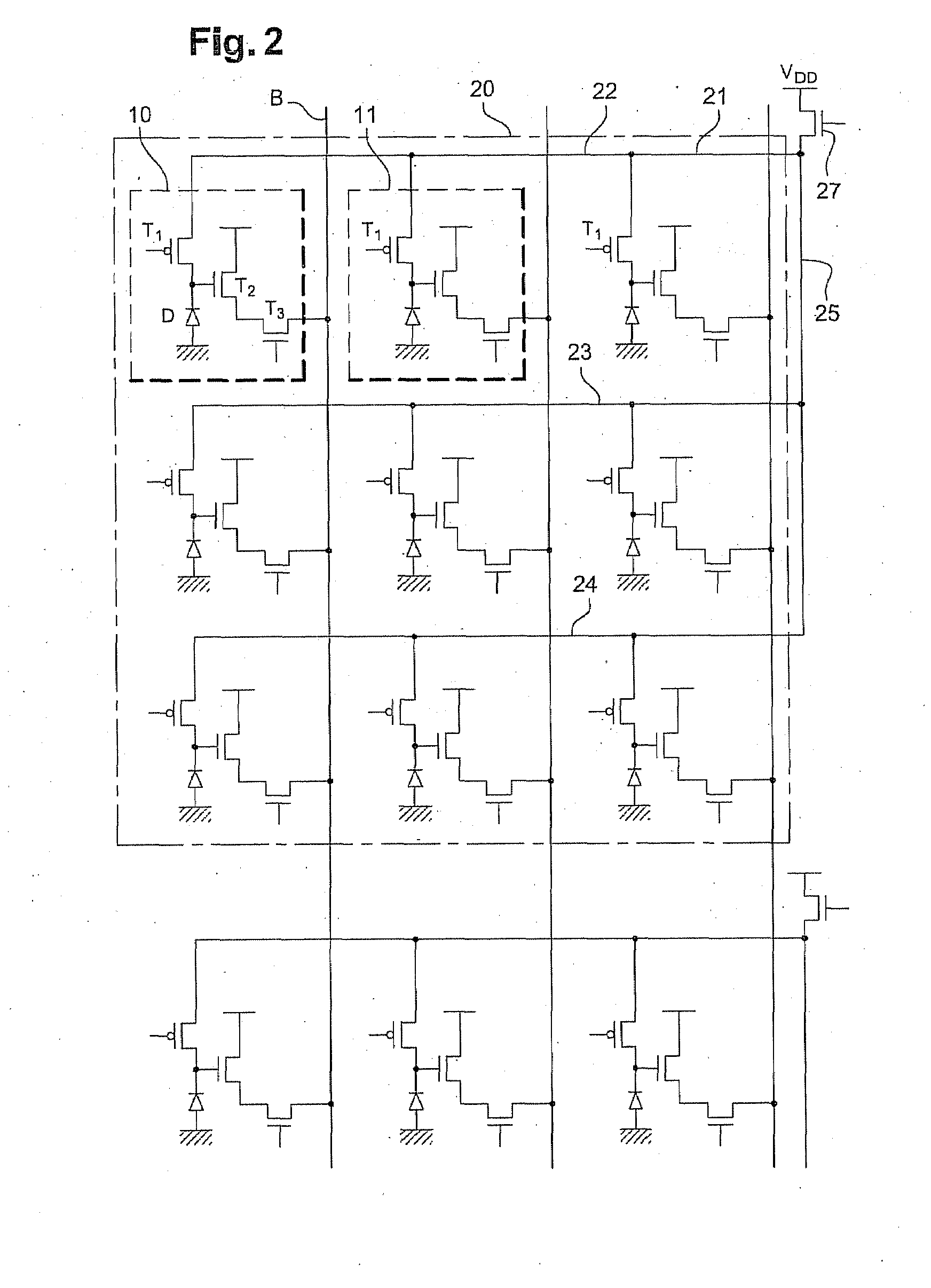Image sensor suitable for operating in subresolution mode
a subresolution mode and image sensor technology, applied in the field of image sensors, can solve the problems of insufficient resolution, insufficient energy dissipation, and inability to meet the requirements of pixels, and achieve the effects of reducing pixel sizes, high sensitivity, and increasing power consumption
- Summary
- Abstract
- Description
- Claims
- Application Information
AI Technical Summary
Benefits of technology
Problems solved by technology
Method used
Image
Examples
Embodiment Construction
[0030]Conventionally, the image sensor according to the invention comprises, as shown in FIG. 2, a plurality of elementary pixels (10), (11) shown by areas in dotted lines. Each elementary pixel comprises a photodiode (D) whose cathode is connected to the grid of a follower transistor (T2) for converting the photodiode charge into a current. When the selection transistor (T3) is a pass-transistor, this follower transistor delivers to a column bus bar (B1).
[0031]According to the invention, the various elementary pixels are grouped in subsets, in order to define macro-pixels (20), which in the embodiment shown, comprise nine elementary pixels.
[0032]More precisely, each macro-pixel comprises a common electrical connection, a charge sharing network (21). In the embodiment shown in FIG. 2, this network (21) is formed of three tracks (22), (23), (24) parallel to the pixel lines and connected to one end of the connecting track (25) parallel to a column. Thus, each pixel is connected to thi...
PUM
 Login to View More
Login to View More Abstract
Description
Claims
Application Information
 Login to View More
Login to View More - R&D
- Intellectual Property
- Life Sciences
- Materials
- Tech Scout
- Unparalleled Data Quality
- Higher Quality Content
- 60% Fewer Hallucinations
Browse by: Latest US Patents, China's latest patents, Technical Efficacy Thesaurus, Application Domain, Technology Topic, Popular Technical Reports.
© 2025 PatSnap. All rights reserved.Legal|Privacy policy|Modern Slavery Act Transparency Statement|Sitemap|About US| Contact US: help@patsnap.com



